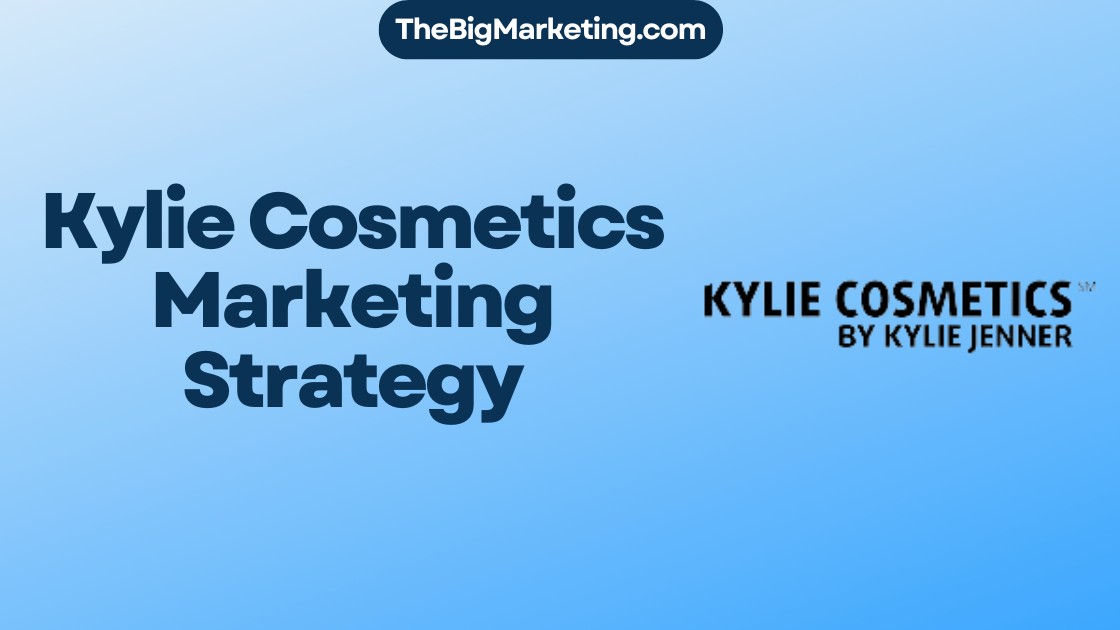Sensodyne, the toothpaste brand known for its effective relief from tooth sensitivity, has experienced remarkable success in recent years. With a 20% market share and annual revenues exceeding $1 billion, Sensodyne has emerged as a market leader in the sensitivity sector. This case study explores the key strategies and tactics employed by Sensodyne to establish its dominance and solidify its position as the go-to brand for individuals with sensitive teeth.
Key Takeaways:
- Sensodyne’s marketing strategy revolves around raising awareness about tooth sensitivity and positioning itself as the solution.
- Extensive market research and consumer targeting have played a crucial role in Sensodyne’s success.
- GlaxoSmithKline’s acquisition of Sensodyne and its subsequent marketing efforts have propelled the brand’s growth.
- Sensodyne utilizes targeted advertising campaigns to reach consumers actively seeking solutions for tooth sensitivity.
- Pricing and positioning as a premium brand have helped Sensodyne establish its value proposition and appeal to a specific target audience.
The Importance of Awareness: Unlocking the Potential
Prior to its acquisition by GSK, Sensodyne had a low penetration rate of only 5% among sensitivity sufferers. This was mainly due to the lack of awareness among individuals with sensitive teeth regarding their condition and the available treatments. Many people did not understand that their pain could be treated, leading to an untapped market for Sensodyne to explore.
To unlock the potential of this untapped market, Sensodyne realized the importance of raising awareness about tooth sensitivity and positioning themselves as the solution. They conducted extensive market research to gain insights into consumer attitudes and preferences, allowing them to tailor their brand messaging in a way that effectively targeted their desired audience.
The market research conducted by Sensodyne helped them understand the mindset of individuals with sensitive teeth and identify the key pain points they experienced. By understanding the consumer’s perspective, Sensodyne was able to develop a brand messaging strategy that resonated with their target audience and effectively communicated the benefits of their products.
Through targeted consumer targeting strategies, Sensodyne was able to reach individuals who were most likely to be searching for solutions to tooth sensitivity. They crafted their brand messaging to address the specific concerns and needs of these consumers, showcasing how Sensodyne could alleviate their pain and improve their oral health.
By focusing on awareness and education, Sensodyne was able to position themselves as the go-to brand for individuals with sensitive teeth. They successfully unlocked the potential of an untapped market by understanding their consumers’ needs and delivering a brand message that resonated with them.
Next, we will explore the pivotal role of GSK in Sensodyne’s success and how their marketing acquisition strategies propelled the brand to new heights.
GSK’s Role in Sensodyne’s Success
GlaxoSmithKline (GSK) played a pivotal role in the success of Sensodyne, following its acquisition in 2000. Recognizing the untapped market potential of Sensodyne, GSK implemented strategic initiatives to propel its growth and establish the brand as a trusted leader in the sensitivity sector.
One of the key strategies employed by GSK was the improvement of Sensodyne’s distribution channels. They expanded sales by making the product available not only in pharmacies but also in supermarkets, ensuring wider accessibility for consumers. This move significantly increased the visibility and availability of Sensodyne, enabling more individuals to discover and purchase the toothpaste.
GSK also leveraged the power of the “Dentist Effect” by partnering with dentists to recommend Sensodyne to their patients. Dentists played a crucial role in educating consumers about tooth sensitivity and the effectiveness of Sensodyne as a solution. This approach not only boosted the credibility of the brand but also expanded its reach through the established patient-dentist relationship, fostering trust and loyalty among consumers.
Investment in television advertisements featuring real dentists was another key marketing strategy adopted by GSK. These advertisements educated consumers about tooth sensitivity and effectively communicated the benefits and effectiveness of Sensodyne. Leveraging the authority and expertise of real dentists in the advertisements helped build credibility and reinforce Sensodyne’s position as a recommended brand in the sensitivity sector.
Sensodyne’s Marketing Acquisition and Brand Promotion Initiatives by GSK
| Initiative | Description |
|---|---|
| Improved Distribution Channels | GSK expanded sales by making Sensodyne available in supermarkets, in addition to pharmacies, increasing accessibility. |
| “Dentist Effect” Partnership | By partnering with dentists, GSK leveraged their recommendations to educate patients about Sensodyne’s effectiveness. |
| Television Advertisements | GSK invested in TV ads featuring real dentists to raise awareness and communicate the benefits of Sensodyne. |
Through these marketing and promotional efforts, GSK successfully established Sensodyne as a trusted and recommended brand for individuals with tooth sensitivity. By capitalizing on the untapped market potential and implementing strategic initiatives, GSK played a crucial role in driving Sensodyne’s success and market dominance.
Targeted Advertising: Reaching the Right Audience
Sensodyne recognized the importance of targeted advertising to effectively reach their desired audience. To achieve this, the brand implemented a range of digital marketing tactics to connect with consumers actively searching for solutions to tooth sensitivity. By leveraging the power of digital platforms, Sensodyne was able to strategically position their advertising campaigns to raise awareness about sensitivity and highlight the effectiveness of their product.
One key aspect of Sensodyne’s advertising strategies was the utilization of real dentists in their ads. This approach not only enhanced the credibility of the brand but also established a sense of trust among consumers. By featuring dental professionals who could speak about the benefits of Sensodyne toothpaste, the brand was able to capture the attention and trust of its target audience.
Additionally, Sensodyne recognized the emotional aspect of sensitivity pain and incorporated it into their advertising. By portraying relatable scenarios and emphasizing the relief Sensodyne provides, the brand was able to resonate with their audience on a deeper level. This emotional connection not only helped drive brand recall but also increased consumer engagement and loyalty.
Sensodyne’s targeted advertising strategies played a crucial role in establishing the brand as a market leader in the sensitivity sector. By employing digital marketing tactics, leveraging the expertise of real dentists, and appealing to the emotions of their audience, Sensodyne successfully reached the right consumers and effectively communicated the value of their product.
| Benefits of Sensodyne’s Targeted Advertising | Impact |
|---|---|
| Increased brand awareness | Expanded consumer reach and market penetration |
| Enhanced brand credibility | Established trust among consumers |
| Improved brand recall | Increased consumer engagement and loyalty |
| Effective communication of product value | Convinced target audience of Sensodyne’s effectiveness |
Pricing and Positioning: The Value Proposition
Sensodyne has strategically positioned itself as a premium toothpaste brand, targeting the upper and middle-class consumers. This positioning allows Sensodyne to convey a sense of quality and effectiveness, making it the go-to brand for individuals seeking a reliable solution for tooth sensitivity. By pricing their product at a higher range compared to other toothpaste brands, Sensodyne emphasizes its commitment to research and development, as well as continuous innovation, ensuring the highest standard of oral care.
The value proposition of Sensodyne lies in its ability to differentiate itself from competitors by offering a specialized toothpaste formulated specifically for sensitivity. This targeted approach resonates with consumers who are willing to invest in a product that caters to their unique needs. Sensodyne’s brand promotion initiatives highlight the benefits of using their toothpaste, showcasing its effectiveness in combating tooth sensitivity and providing relief.
Through strategic marketing efforts, Sensodyne has successfully positioned itself as a trusted and preferred brand among consumers who prioritize oral health. This positioning, coupled with continuous improvement in product quality, solidifies Sensodyne’s value proposition in the market.
Moreover, Sensodyne’s commitment to excellence extends beyond pricing and positioning. By emphasizing research and development, Sensodyne demonstrates its dedication to continually innovating and improving its product to meet the evolving needs of consumers with sensitive teeth. This commitment further reinforces the brand’s value proposition and solidifies its position as a market leader in the sensitivity sector.
| Key Benefits of Sensodyne’s Pricing and Positioning Strategy: |
|---|
| Conveys a sense of quality and effectiveness |
| Allows differentiation from competitors |
| Targets upper and middle-class consumers |
| Emphasizes research and development |
| Provides a specialized solution for sensitivity |
| Solidifies Sensodyne’s value proposition in the market |
Building Credibility: The Dentist’s Stamp of Approval
Sensodyne understands the significance of dentist recommendations in both driving sales and raising awareness about tooth sensitivity. By actively engaging with dentists, Sensodyne has been able to showcase the effectiveness of its toothpaste in addressing this common dental concern. Dentists play a crucial role in educating their patients about sensitivity and recommending Sensodyne as a trusted solution.
This approach not only enhances Sensodyne’s credibility but also leverages the existing patient-dentist relationship to expand its reach. Dentist endorsement serves as a key driver of brand trust and consumer loyalty for Sensodyne, reinforcing its position as a go-to brand for individuals with sensitive teeth.
Strengthening the Bond:
- Collaborating with dentists to demonstrate Sensodyne’s toothpaste effectiveness
- Educating patients about tooth sensitivity and Sensodyne as a solution
- Utilizing dentist endorsement to reinforce brand credibility
- Expanding reach by leveraging the patient-dentist relationship
International Reach: Expanding Sensodyne’s Presence
Sensodyne’s marketing strategy has propelled the brand beyond national boundaries, enabling it to establish a formidable global presence. The brand’s commitment to reaching diverse audiences across the globe is evident in their extensive international marketing efforts.
A key component of Sensodyne’s global marketing approach involves the production and dissemination of TV advertisements featuring real dentists. These ads have been broadcasted in over 100 countries, localized in different languages to effectively engage with audiences worldwide.
By tailoring their marketing campaigns to suit local markets and cultural nuances, Sensodyne has successfully expanded its brand presence and solidified its position as a global leader in the sensitivity sector. Their ability to effectively communicate the value and effectiveness of Sensodyne as a trusted solution for tooth sensitivity has resonated with consumers across the globe.
Through their global marketing efforts, Sensodyne has garnered recognition as an impactful brand, providing individuals with an effective and reliable solution for sensitive teeth. This international reach has helped Sensodyne establish a strong global foothold, further bolstering their brand image and reinforcing their commitment to addressing the needs of sensitivity sufferers worldwide.
Research and Development: Continuous Innovation
Sensodyne’s commitment to continuous innovation through research and development is a key driver of its success in the sensitivity sector. The brand recognizes the importance of staying ahead of the competition and addressing the specific needs of individuals with sensitive teeth. Through extensive market research and collaboration with dentists, Sensodyne actively seeks to understand evolving consumer preferences and pain points related to sensitivity.
This dedication to research and development allows Sensodyne to constantly improve its product and cater to the needs of different age ranges. By incorporating advanced ingredients and addressing different types of sensitivity, Sensodyne maintains its position as a leading brand in the market. The brand’s focus on innovation ensures that individuals with sensitive teeth have access to the most effective and tailored solutions.
Market Research: Understanding Consumer Preferences
Sensodyne’s market research efforts play a crucial role in informing its product development strategy. By conducting in-depth research, the brand gains valuable insights into consumer preferences and pain points related to sensitivity. This information helps Sensodyne identify opportunities for product improvement and innovation to better meet the needs of its target audience.
Through market research, Sensodyne can keep a pulse on emerging trends and consumer demands. This allows the brand to develop new formulations, address specific dental concerns, and better position its products in the market. By staying attuned to consumer preferences, Sensodyne can continuously adapt and offer solutions that resonate with its audience.
The Dentist’s Perspective: Collaboration and Feedback
Dentists play a vital role in Sensodyne’s research and development process. The brand actively engages with dental professionals to gain insights into the challenges faced by individuals with sensitive teeth. By collaborating with dentists, Sensodyne can access expert knowledge and receive valuable feedback on its products.
Through dentist partnerships, Sensodyne can test and refine its formulations to ensure they are effective in addressing tooth sensitivity. Dentists provide valuable input based on their firsthand experience with patients, helping Sensodyne tailor its products to meet the specific needs of those suffering from sensitivity. This collaboration ensures that Sensodyne’s product development efforts align with the needs and expectations of dental professionals and their patients.
| Benefit | Effect |
|---|---|
| Advanced Ingredients | Enhanced effectiveness in addressing tooth sensitivity |
| Targeted Formulations | Catering to the specific needs of different age ranges |
| Continuous Innovation | Outpacing competitors and maintaining market leadership |
| Consumer Satisfaction | Delivering tailored solutions that meet consumer expectations |
Market Dominance: Sensodyne’s Success Story
Sensodyne has emerged as a dominant player in the sensitivity sector, thanks to its effective marketing strategy and commitment to raising awareness, building credibility, and continuous innovation. Despite facing competition from established brands like Colgate, Sensodyne has successfully captured a significant market share and positioned itself as the go-to brand for individuals with sensitive teeth.
The success of Sensodyne can be attributed to various factors. First and foremost is its strong brand messaging, which effectively communicates the brand’s value proposition and resonates with consumers experiencing tooth sensitivity. By addressing the specific pain points of this target audience, Sensodyne has gained their trust and loyalty.
Sensodyne’s targeted advertising efforts have also played a pivotal role in its market dominance. Through strategic digital marketing tactics, the brand has reached consumers actively seeking solutions for tooth sensitivity. By utilizing real dentists in their advertisements and highlighting the emotional aspects of sensitivity pain, Sensodyne has effectively connected with its target audience and established a strong brand recall.
The Power of Distribution
In addition to its marketing efforts, Sensodyne has also achieved market dominance through extensive distribution channels. The brand expanded its reach from pharmacies to supermarkets, making its products more accessible to consumers. By increasing its retail presence, Sensodyne has effectively reached a wider customer base and solidified its position as a leading toothpaste brand for sensitive teeth.
The trust and credibility Sensodyne has garnered from consumers and dentists alike further contribute to its market dominance. Sensodyne actively engages with dentists to showcase the efficacy of its toothpaste in addressing tooth sensitivity. By leveraging the dentist’s stamp of approval, Sensodyne has not only boosted its credibility but has also tapped into the existing patient-dentist relationship to expand its reach and influence.
The case study of Sensodyne serves as a testament to the power of effective marketing strategy in achieving market dominance. Through its focus on awareness, credibility, innovation, and strong brand messaging, Sensodyne has surpassed its competitors and established itself as the preferred choice for individuals seeking relief from sensitive teeth.
With its continued commitment to research and development, Sensodyne is poised to maintain its market dominance and further enhance its position as a global leader in the sensitivity sector.
Conclusion
Sensodyne’s marketing strategy has been a transformative force, propelling the brand from a small player to a billion-dollar success story. Through a combination of raising awareness about sensitivity, engaging with dentists, implementing targeted advertising, and continuously innovating their product, Sensodyne has firmly established itself as a market leader in the sensitivity sector. This remarkable journey exemplifies the power of strategic marketing to unlock the potential of untapped markets and create a strong brand presence.
The success of Sensodyne’s marketing strategy can be attributed to their keen understanding of consumer insights, the establishment of credibility through dentist endorsements, and the delivery of a valuable solution that addresses consumers’ pain points. By positioning themselves as the go-to brand for sensitive teeth, Sensodyne has captured the trust and loyalty of consumers across the globe. Their remarkable achievements serve as a shining example of how marketing can drive market dominance and launch a brand into unprecedented success.
In conclusion, Sensodyne’s marketing strategy, including its toothpaste campaigns and overall approach, has been instrumental in propelling the brand to new heights. By prioritizing consumer awareness, engagement with dentists, targeted advertising, and continuous product innovation, Sensodyne has emerged as a market leader in the sensitivity sector. This success story is a testament to the power of effective marketing strategies in transforming a small player into a billion-dollar brand.







